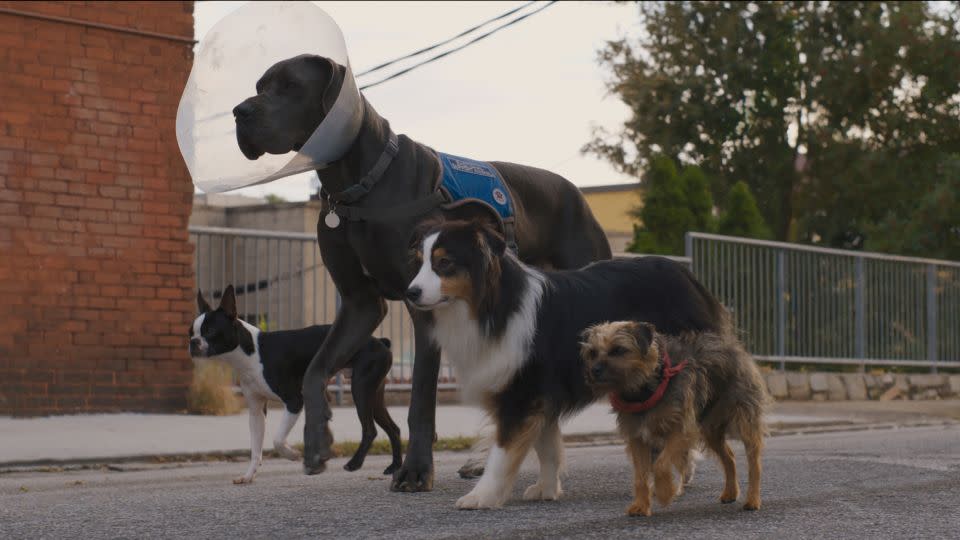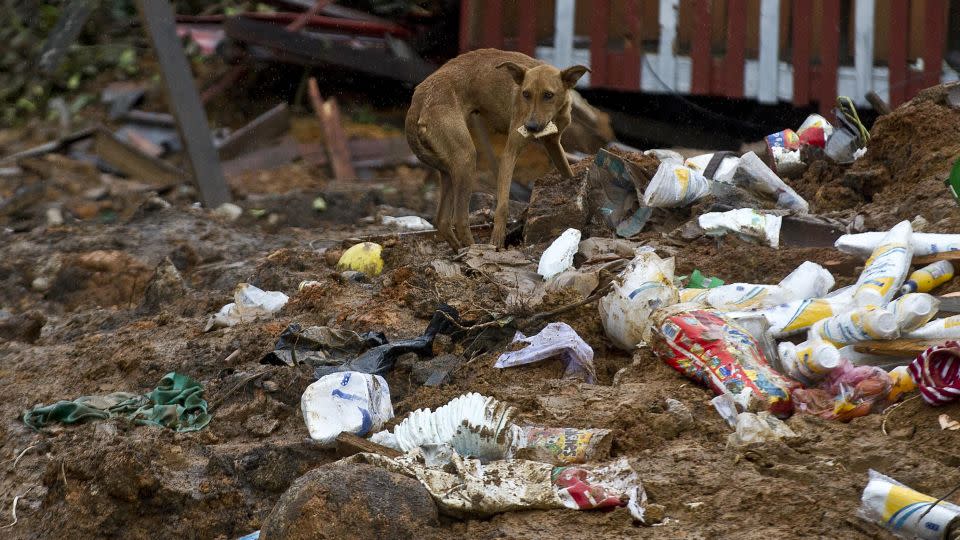Opinion: ‘Strays’ is a raunchy, hilarious reminder of a real problem
Editor’s Note: Neil J. Young is a historian, writer and podcaster. He is the author of “We Gather Together: The Religious Right and the Problem of Interfaith Politics” and the forthcoming “Coming Out Republican: A History of the Gay Right.” The views expressed here are his own. Read more opinion on CNN.
Universal’s new live-action movie “Strays” tells the story of Reggie, a scruffy Border Terrier who has been abandoned by his lowlife, pothead owner Doug (Will Forte). Being a very good dog (is there any other kind?), Reggie, voiced by Will Ferrell, thinks at first that Doug is just playing an elaborate game with him — continually dropping him off far from home to give him a challenge to see if he can find his way back. But after Doug finally drives three hours away and dumps him in a sketchy alley, Reggie starts to think something else might be up.

A ragtag group of other abandoned and neglected dogs takes Reggie in and helps him understand that Doug never loved him. Together, they hatch a plan.
What follows is a classic dog trek movie a la “Homeward Bound” but with a twist. Rather than making a long journey home so he can be happily reunited with his loving family, Reggie embarks on a mission to exact revenge on his hateful former owner.
With an R-rating for its “pervasive language, crude and sexual content, and drug use,” “Strays” is not your grand-doggie’s “Lassie.” Instead, it belongs to that small genre of films like “Look Who’s Talking” and “Ted,” which turn usually innocent types — babies, teddy bears and, now, canines — into crass-talking, sex-obsessed wisecracks.
Yet the raunchy comedy also delivers a pretty mawkish message about recognizing abusive relationships and embracing self-love. Reggie’s journey serves mostly to remind human viewers to set appropriate boundaries and extract themselves from toxic involvements. In the end, “Strays” has surprisingly little to say about the very real problem its title speaks to.
To be sure, no one is pretending that anyone going to see this movie expects it to offer a profound exploration of the deeper structural conditions that lead to so many stray dogs and cats each year. But to the extent “Strays” has something to say about pet homelessness, it portrays both the problem and its solution as largely the work of individual actors. The strays of “Strays” are out on the streets because of their very bad owners. Those who get saved are rescued by very good people.

But the nearly 200-year history of stray animals in America provides other lessons. Given the ongoing crisis of homeless pets in this nation and especially how it has been exacerbated by the Covid-19 pandemic, climate-driven natural disasters and the growing financial precarity of more and more Americans, it’s deluded and dangerous to think we can just “adopt-don’t-shop” our way to a better future for our furry friends. The more financial, social and climate-related precarity suffered by their humans, the more pet animals suffer; domesticated animals, like their humans, need systemic change to mitigate that precarity.
History shows us examples of collective efforts to address the issue of stray domesticated animals, including in the origins of the term itself. While vagrant domesticated animals have existed for hundreds of years, two historical developments in the 19th century led to the rise of “the stray” as a distinct category and a problem. The first was the huge growth of pet-owning, especially among upper-class Americans. Adored, cared for and considered part of the family, the pet dog, who was walked on a leash in public and resided within the home, drew a clear contrast from the untended mutt on the street.
The second factor — urbanization — made the problem of strays visible to greater numbers of people. In cities like New York, Boston and Philadelphia, residents regularly complained about roving packs who prowled the avenues and alleyways. Stray dogs were regarded as dangerous and diseased. They ate garbage, soiled the sidewalks, attacked children and pets and spread rabies. The fear of rabies led to drastic measures, including summer bounty hunts where men and boys shot or clubbed stray dogs and laws that authorized police to kill wandering animals. To manage the day-to-day nuisance of too many strays on the streets, cities hired dog catchers to round up canines and eliminate them.

Such cruelty was eventually replaced by the “ethic of kindness” that arose in the Victorian era and considered the compassionate treatment of animals as a marker of belonging to the middle class and proof of a civilized society. The creation of the American Society for the Prevention of Cruelty to Animals (ASPCA) in 1866 led to important anti-cruelty reforms in laws and practice. By the late 19th century, the ASPCA was operating animal shelters where they ran adoption programs for the stray animals they housed.
This charitable work was often supported by government dollars. In other places, municipalities ran their own shelter programs. This mass expansion of animal control systems largely removed strays from the streets, but the problem of homeless animals grew worse as pet ownership exploded in the 20th century. With the pet market becoming a major industry, animal breeders and pet stores, largely unregulated, contributed to the problem, creating an excess of inventory. Between 1950 and 1995, about 10 million dogs, mostly strays, were euthanized every year.
Huge public and private investments, public health campaigns and a greater public consciousness – think about Bob Barker telling his “Price is Right” audience each day to “help control the pet population, have your pet spayed or neutered” — worked to drastically reduce those numbers. But they still remain shockingly high. According to the ASPCA, nearly 1 million shelter animals are euthanized annually. (As recently as 2011, it was as high as 2.6 million.)
That’s a good downward trend, but there are some troubling signs. Pet adoption skyrocketed during Covid, prompting happy headlines about animal shelters being emptied out. More recently, though, the news has focused on “pandemic pets” being given up with the predictable terrible consequences. Data gathered earlier this summer in Orange County, California, for instance, found that the rate of shelter dogs being euthanized there has doubled since 2018.
It’s tempting to blame the problem on bad people who selfishly dumped their dogs when things got back to normal. But evidence suggests a lot of pets are only being given up after agonizing and painful decisions driven by financial hardship as inflation continues to climb. And reports of animal shelters in Maui filling up with pets after the terrible Lahaina fires earlier this month demonstrate again how natural disasters unexpectedly separate animals from their owners, often with catastrophic results.
Such examples underscore that the problem of stray and abandoned animals is shaped as much by large structural conditions as it is by individual decisions — and that governmental action on issues including the economy, health care and climate change can help significantly reduce the number of animals who become unhoused and euthanized each year.
Certainly, Congress can do things that directly address the issue, such as strengthening the Animal Welfare Act. But the more that the federal government does to curb inflation, strengthen the social safety net and tackle climate change, the better off all of us, including our four-legged friends, will be. When Americans are more secure, so are their pets. Thinking otherwise is just barking up the wrong tree.
For more CNN news and newsletters create an account at CNN.com
